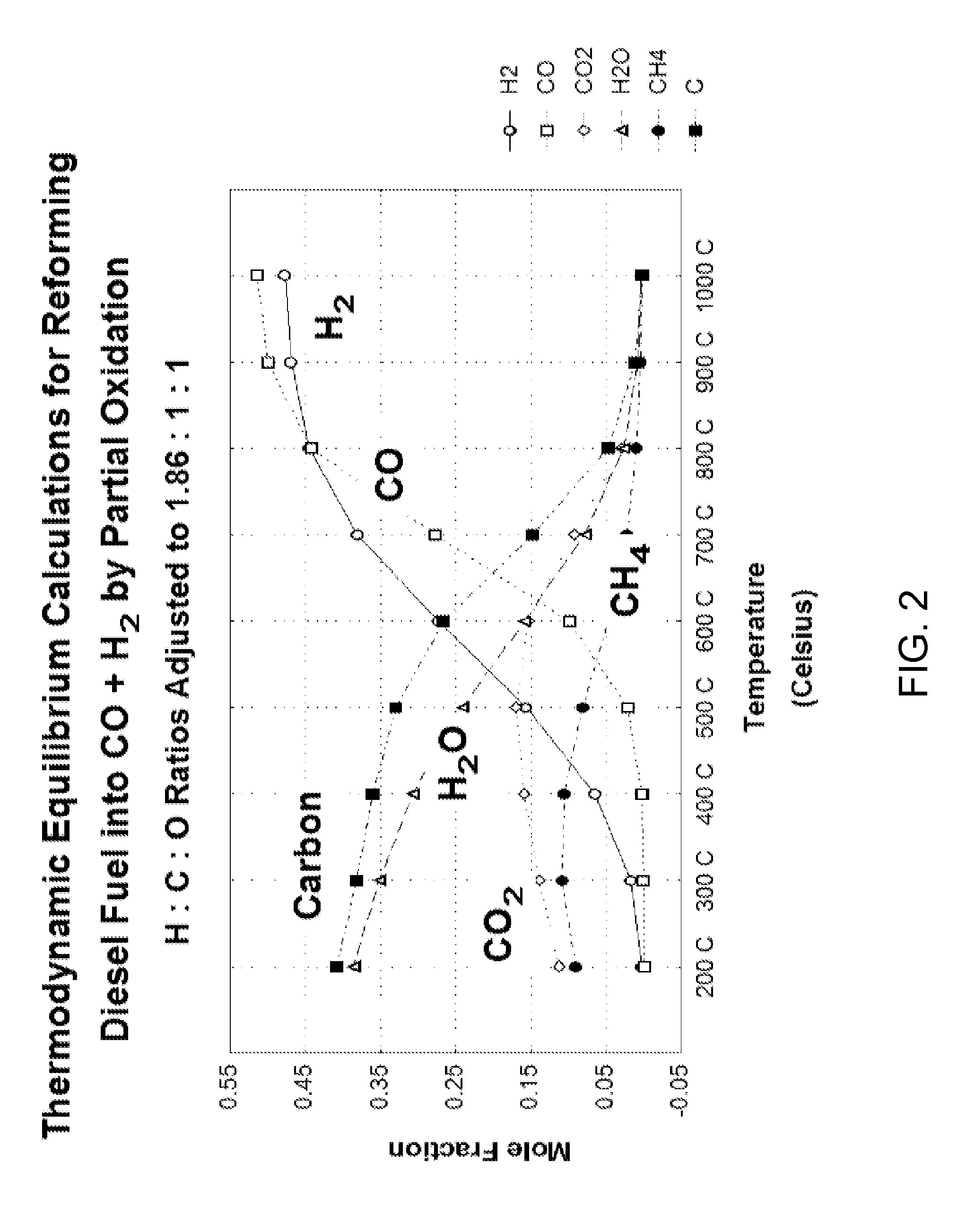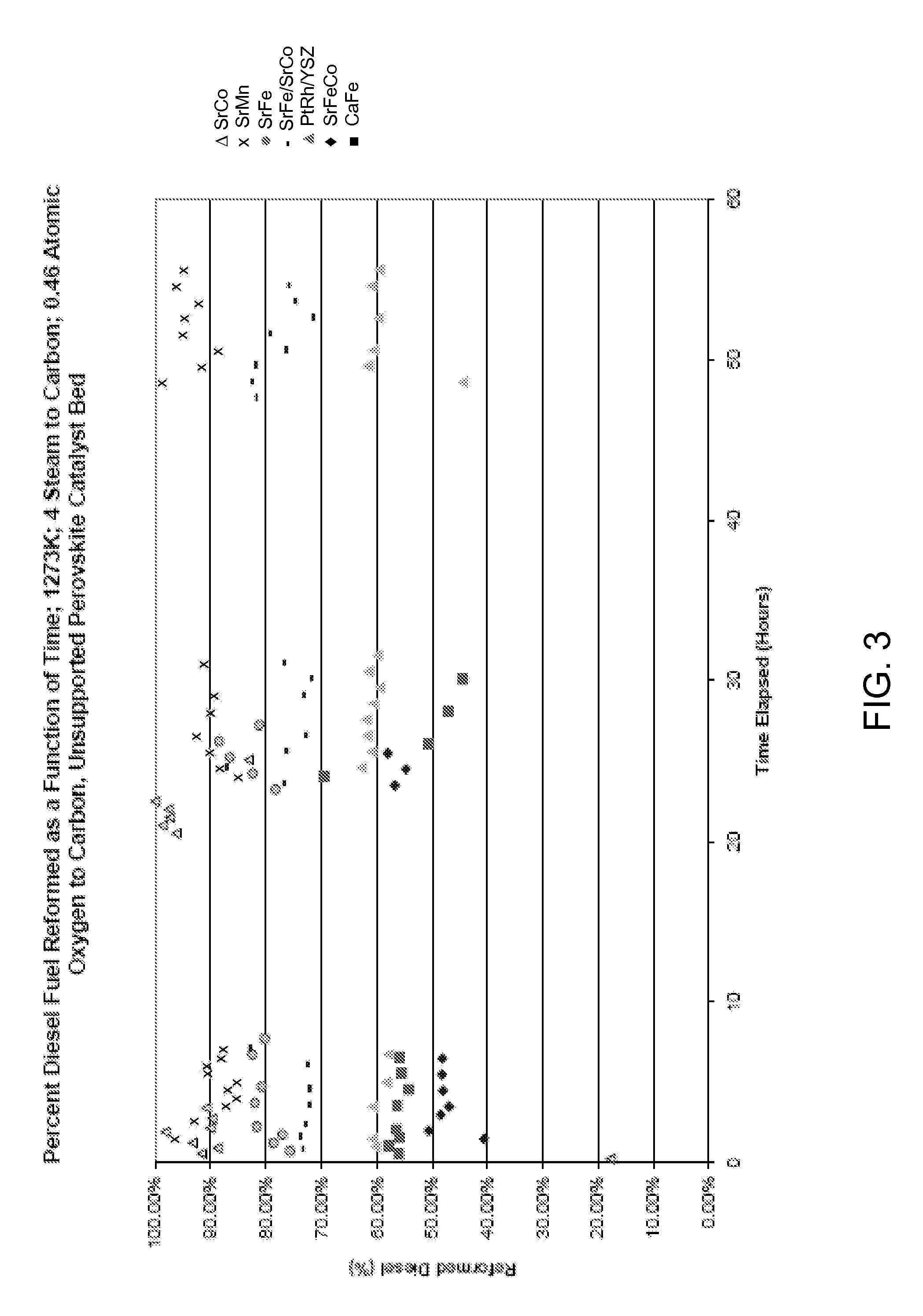Catalytic membrane reactor and method for production of synthesis gas
a catalytic membrane reactor and catalyst technology, applied in the direction of combustible gas production, oxygen/ozone/oxide/hydroxide, chemical production, etc., can solve the problems of difficult to reform commercial diesel fuel into synthesis gas in small compact fuel reformers without greatly dropping the overall system efficiency, and the deposition of carbon is particularly problematic, so as to achieve the effect of high oxygen flux
- Summary
- Abstract
- Description
- Claims
- Application Information
AI Technical Summary
Benefits of technology
Problems solved by technology
Method used
Image
Examples
example 1
[0200]Porous wall of yttria stabilized zirconia (or other ceramic) is coated with perovskite oxidation catalysts, especially La1−xCaxFeO3−δ (or variations of this perovskite material, such as La1−xSrxFeO3-6, La1−xSrxCoO3−δ, La1−xCaxCoO3−δ, La1−xCaxMnO3-6, La1−xSrxMnO3−δ). La1−xCaxFeO3-6 and variations thereof are used as oxidation catalysts in the hot zone (1000° C.) of the reactor.
example 2
[0201]Porous wall of yttria stabilized zirconia is coated with Pt—Rh oxidation catalyst in the cool zone of the reactor (300-900° C.). Platinum-rhodium catalyst is dispersed within the pores of the ceramic reactor wall using electroless deposition. Wire Pt—Rh gauze is used as the oxidation catalyst in the hot zone of the reactor (>1000° C.).
example 3
[0202]Porous wall of yttria stabilized zirconia coated with perovskite oxidation catalyst such as La1−xCaxFeO3−δ and allied materials, is employed along with Pt—Rh gauze in the hot zone of the reactor.
PUM
 Login to View More
Login to View More Abstract
Description
Claims
Application Information
 Login to View More
Login to View More - R&D
- Intellectual Property
- Life Sciences
- Materials
- Tech Scout
- Unparalleled Data Quality
- Higher Quality Content
- 60% Fewer Hallucinations
Browse by: Latest US Patents, China's latest patents, Technical Efficacy Thesaurus, Application Domain, Technology Topic, Popular Technical Reports.
© 2025 PatSnap. All rights reserved.Legal|Privacy policy|Modern Slavery Act Transparency Statement|Sitemap|About US| Contact US: help@patsnap.com



